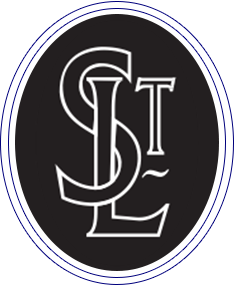Phonics
- At St Lawrence our core phonics programme is StoryTime Phonics. In Reception and Year 1, phonics is taught daily, and children follow the progression within StoryTime Phonics.
- StoryTime Phonics lessons each follow the same sequence, which is revisit and review, teach, practise and apply.
- Phase 1 (listening carefully and tuning into sounds and the sounds of English language) is taught in Nursery and Reception and continues through KS1. The focus is on daily oral blending and exposure to stories and rhymes.
- Phases 2 – 4 are taught to all children in Reception.
- Phase 5 is taught in Year 1.
- Phase 5 is revised and consolidated in Year 2, alongside the spelling requirements of the National Curriculum (NC).
- In Year 2, Phonics lessons are taught to children where appropriate, following the StoryTime Phonics model and focusing on gaps identified through assessment.
- Pure sounds (correct pronunciation of sounds) are used to teach phonics and all adults in school will use pure sounds. Please watch the following video, which shows how each sound is accurately pronounced. These pronunciations are used by us in school to teach and should be used by you at home whenever you are practising sounds and reading with your child: https://youtu.be/BqhXUW_v-1s
At St Lawrence, we teach systematic synthetic phonics (SSP) through StoryTime Phonics. StoryTime Phonics introduces each sound through a high quality text, instilling a love of reading in the children. In Reception and Year 1, we provide daily engaging and interactive Phonics lessons and we plan ‘keep up’ lessons for any children who need to consolidate their learning.
In Reception, children are taught to listen carefully to different kinds of sounds, moving on to tuning in to the sounds of English language. This forms the foundation for learning phonics for reading, writing and spelling.
From the beginning of Reception, children learn how the 44 sounds in English language can be represented by letters of the alphabet in a clear progression, from simple to more complex which allows children to build on their previous knowledge. Children learn to link spoken sounds to letters or graphemes. Beginning with simple, commonly occurring sounds represented by one letter, children learn how to read and write simple CVC (consonant, vowel, consonant) words, such as ‘run’ and ‘cat’. Alongside learning how letters represent sounds, children learn the skills of blending sounds from left to right to read words and saying words slowly to segment the word and write down the sounds they can hear to spell.
By the end of Reception, children have learnt one representation for all of the 44 sounds in English and this includes many sounds that are represented by two (digraph) or three (trigraph) letters e.g. ‘ai’ as in ‘rain’, ‘ch’ as in ‘chip’ and ‘igh’ as in ‘sigh’. They have learnt the concept that a sound may be represented by more than one letter. They have also learnt the key skills of blending and segmenting CCVC and CVCC words, such as ‘stop’ and ‘went’. Alongside these Phonic lessons, we teach children how to apply their phonic skills through individual reading, small group and whole class shared reading.
In Year 1, children learn the many alternative ways that sounds can be represented in English: there are more than 140 ways that the 26 letters of the English alphabet can be combined to represent sounds. For example, ‘ee’ as in ‘see’, ‘ea’ as in ‘read’, ‘e’ as in ‘he’ and ‘ie’ as in ‘chief’. They have also learnt that many combinations of letters can represent more than one sound, for example, how ‘ea’ makes a different sound in ‘mean’ and ‘deaf’.
Daily phonics lessons ensure that children practise their skills intensively, so that they can achieve the automaticity required for fluent reading and spelling. At the end of Year 1 children take the Phonics Screening Check, where they read both words and pseudo words (‘alien’ words), which establishes how well they can decode.
Assessing Phonic knowledge
- In Reception and Year 1, children are assessed daily and at the end of every week on the sounds that have been taught. Once all sounds are taught, children are assessed at the end of every half term. These assessments are continually monitored and reviewed within the school's Phonics phase sound tracker.
- Teachers assessments are used to target and identify children who may need additional practise with the learning. Where gaps are identified, children will benefit from taking part in addition keep up sessions which follow the StoryTime Phonics programme.
- The children in Year 1 take the Phonics Screening Check in the Summer term.
- Children who are assessed as not meeting the standard of the Phonics Screening Check in Year 1 or the recheck in Year 2, will continue to benefit from additional daily Phonics teaching sessions where appropriate.

